Dealing With Severe Garden Drainage Issues
If your garden is frequently flooded or waterlogged, you will know how frustrating it can be. Land drainage systems can often solve the problem - that and a bit of lateral thinking!
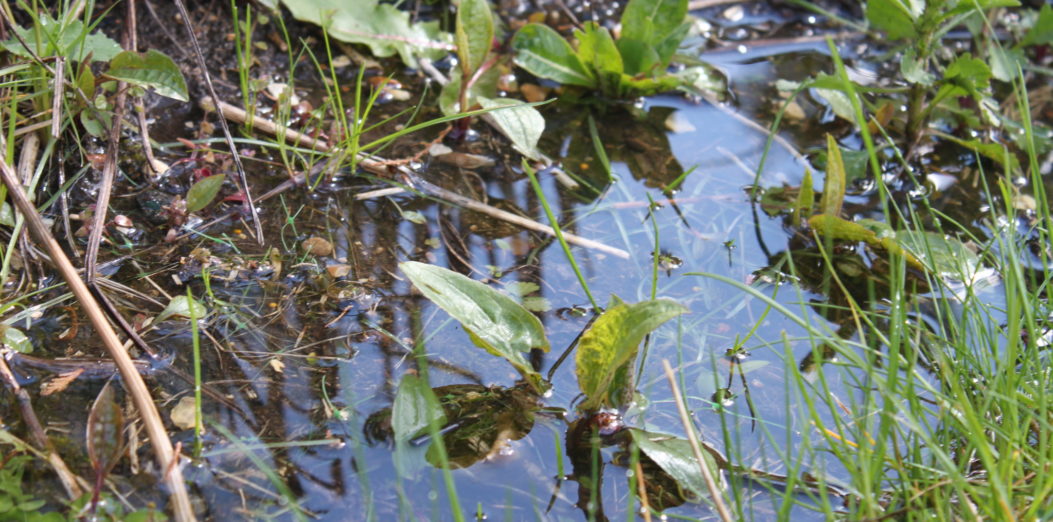
Increasingly as landscapers, we are asked to devise solutions to client’s garden drainage problems. Whilst we have many years’ experience installing land drains and other drainage systems for our clients, in recent years we have had to become somewhat more creative in our drainage problem solving. The design of modern housing developments, accompanied by the high level of rainfall and in some instances a lack of maintenance of public drainage systems all contribute to a seemingly increasing problem.
Land Drainage Systems
So how does a typical land drainage system work?
Whilst land drainage systems come under various different guises and names (French drains, Fin drains, dispersal systems), they all work on the same basic principle, which is that groundwater always follows the path of least resistance, and it will flow down even the gentlest of slopes.
A typical land drainage system comprises a herringbone layout of perforated plastic pipe, laid in trenches on a bed of gravel, and encased in coarse gravel. The pipe network is laid so that it slopes down, such that the water is transported away from the problem area, normally (but not always) into a soakaway, from which it can gradually seep away into the surrounding soil. Before the trenches are backfilled, a geotextile membrane is normally used to prevent soil particles getting into the trench, and also help to prevent root encroachment from surrounding trees.
Two important considerations when installing a land drain
- Can a sufficient enough fall be “manufactured” for the water to drain away by gravity? If not, it might be necessary to install a pump.
- Where will the water be drained to? This is the single biggest issue associated with land drainage. Although a simple land drainage system plus soakaway is achievable in most gardens, it is not always possible to find a suitable location for a soakaway. For example, if your garden is at the bottom of a natural slope and naturally collects all the rain from the surrounding land – a soakaway here would almost permanently be full during wet weather, with the water simply backing up the perforated pipe – not what you want! Another example where a soakaway may not work, is in gardens with heavy clay soils, as the water struggles to drain through the heavy soil.
Possible solutions if there is no place for a soakaway
If there is no place for a soakaway, it might be possible to drain the water elsewhere – neighbouring waste ground, or a drainage stream (if permissible), or rain water pipes and storm drains.
In some cases it really is difficult, if not impossible, to achieve an economically viable solution. However, drawing on our experience with problems such as these and with a bit of lateral thinking, often a sensible and pragmatic solution can be devised – as can be seen with the following case studies.
Two Gardens with Severe Garden Drainage Issues
Neither of the gardens in the following case studies are on a flood plain, but both are good examples of how terrain, soil, and weather conditions can combine to cause huge practical garden drainage problems. Read further, to see how we resolved them.
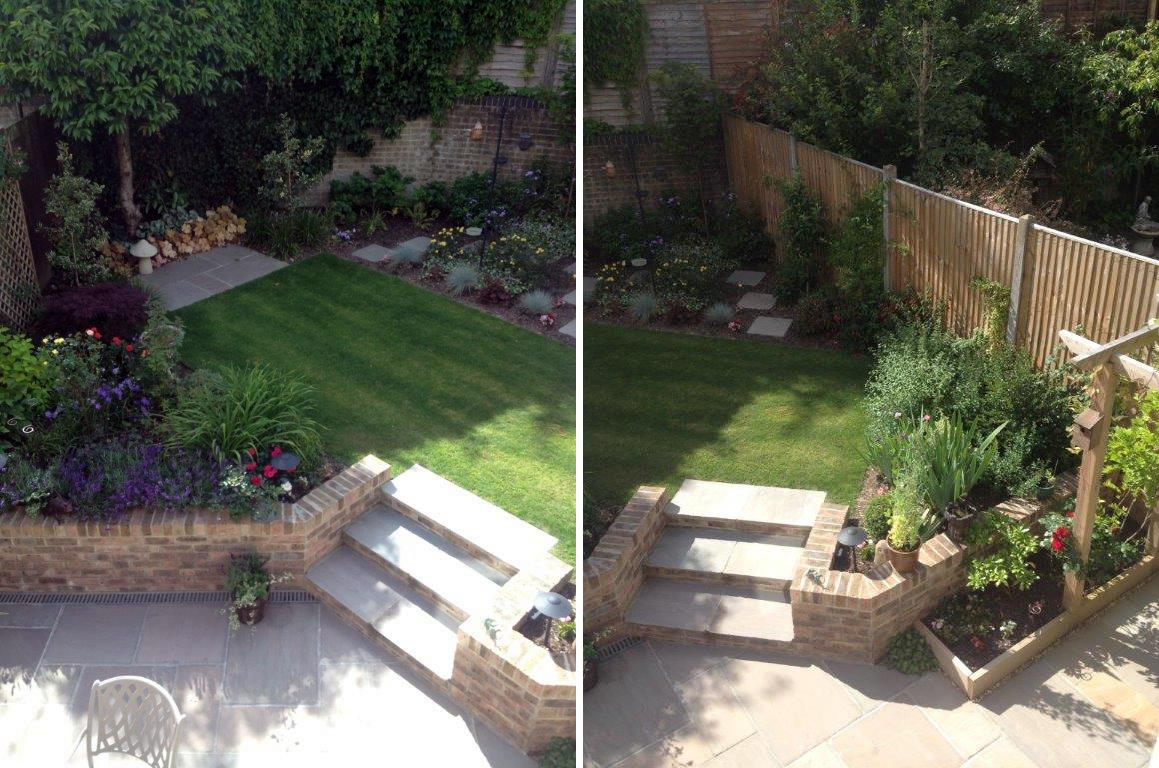
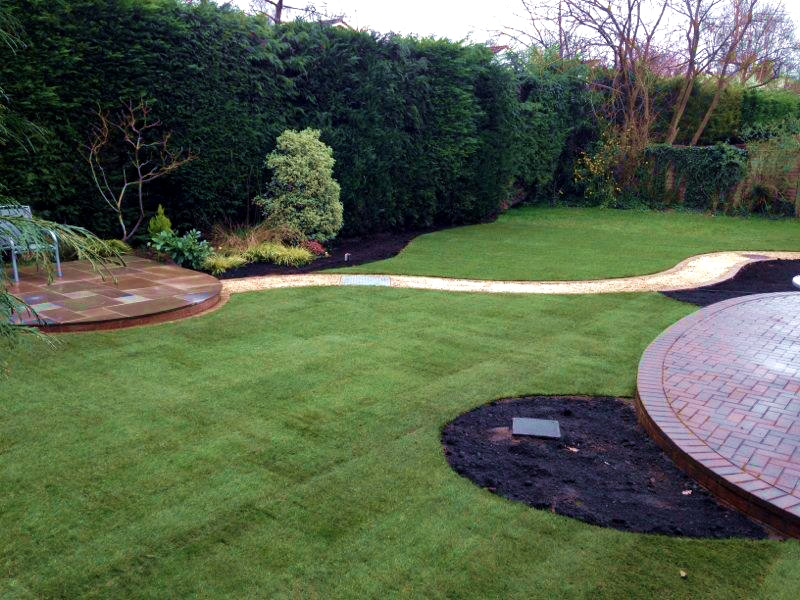
Case Study 1 – Lower Earley
House Type: Modern link detached semi
Garden Situation: Small back garden at a considerably lower level than the houses beyond (perhaps 2-3m lower). Also a tiny bit lower than the gardens either side. Existing garden on two levels: a shallow lower level near the house, and a higher level further up the garden.
Soil Type: Very heavy clay soil. Soil also compacted and still contained builder’s rubble.
The Requirement:
The client had requested a larger patio near the house, allowing four people to sit comfortably around a table. Our initial design included a new retaining wall and steps, plus the new patio. As we knew the garden would be acting as a kind of sump for the higher gardens at the back of the property, we knew that a practical drainage solution would be required.
Solution:
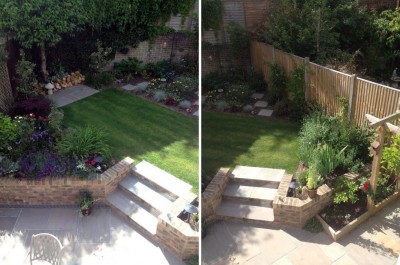
We started by installing extensive gulley drains, which connected to a huge new soakaway. However, in the recent heavy rains, it quickly became apparent that a soakaway-based solution, would not be adequate, and that we would need to drain surface water to the rain water pipes and storm drainage.
To add to the challenge, the rain water / storm drainage pipes were all at the front of the property. Therefore, as a temporary solution, we installed a small automated pump to pipe the water through the garage to the storm drains in the front of the property (the pump only operated when the level of water in the pump chamber rose above a certain level).
As a more permanent solution, we went on to install a permanent, gravity fed pumping system. Permanent pipework was installed under the garage floor, allowing water to be pumped out to the rain water pipes and storm drainage at the front of the property.
Case Study 2 – Crowthorne
House Type: Detached modernised house
Garden Situation: This house is situated at the bottom of a dip in the surrounding area. There is also a small stream adjoining (part of the Emm Brook system).
Soil Type: Various – a mixture of clay and loam
The Requirement:
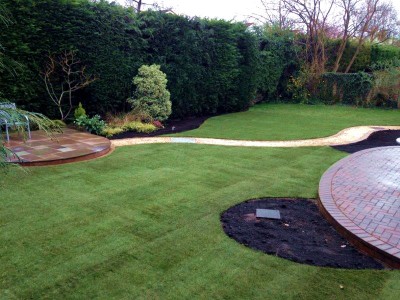
The garden has always tended to get quite wet after heavy rainfall, as it receives the run-off from the surrounding land.
The client had already installed pumps and pipes to drain the garden into the adjoining stream. The original plan was for us to simply redesign the border shapes and planting, with some relatively minor changes to the structure of the garden and the hard landscaping.
However, a period of excessive rainfall caused a dramatic change of plan as the entire garden and garage floor was totally submerged under 150-200mm of water. Our client had to make frantic efforts to prevent water entering the house. Fortunately the stream itself did not breach its banks (although it was very close) – the flooding was due to the sheer volume of surface water run-off, over a relatively short period of time.
The Solution:
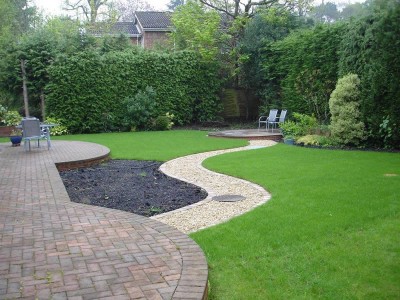
The client talked to various public authorities about shoring up the banks of the stream. Meanwhile, we worked with the client to devise a long term drainage solution for the garden, embedded within an attractive overall garden design.
Our solution incorporates new low retaining walls, drainage pipes, and the gentle re-grading of some parts of the garden. Crucially, the design includes a wide, sweeping gravel path to a new raised sun terrace, acting as a vital catchment area and drainage system route through the garden. Clever positioning of the gravel path allowed us to hide a mini sewage pumping station and some heavy duty wide draingage paths underneath it. The rain is then pumped off to the side of the garden, under the new raised patio, and from there is fed out into the little stream that runs along the side of the garden.
We also regraded the soil before returfing the lawn, so that the rain now runs down gently from all sides towards the path and hidden pumping station. The lawn and borders were shaped on either side of the path to ensure that the garden appears a harmonious whole.
These two projects serve to show that with careful planning (and also the ability to adapt and modify plans as a project develops), flood-prone gardens can be dealt with! We hope that our years of experience of planning for a wide variety of constraints has given us a can-do attitude, where problems are there to be solved, not walked away from!
The result? Two happy clients with happy, flood-free gardens!
Photo Credits
“Waterlogged Garden April” by tejvanphotos is marked with CC BY 2.0.